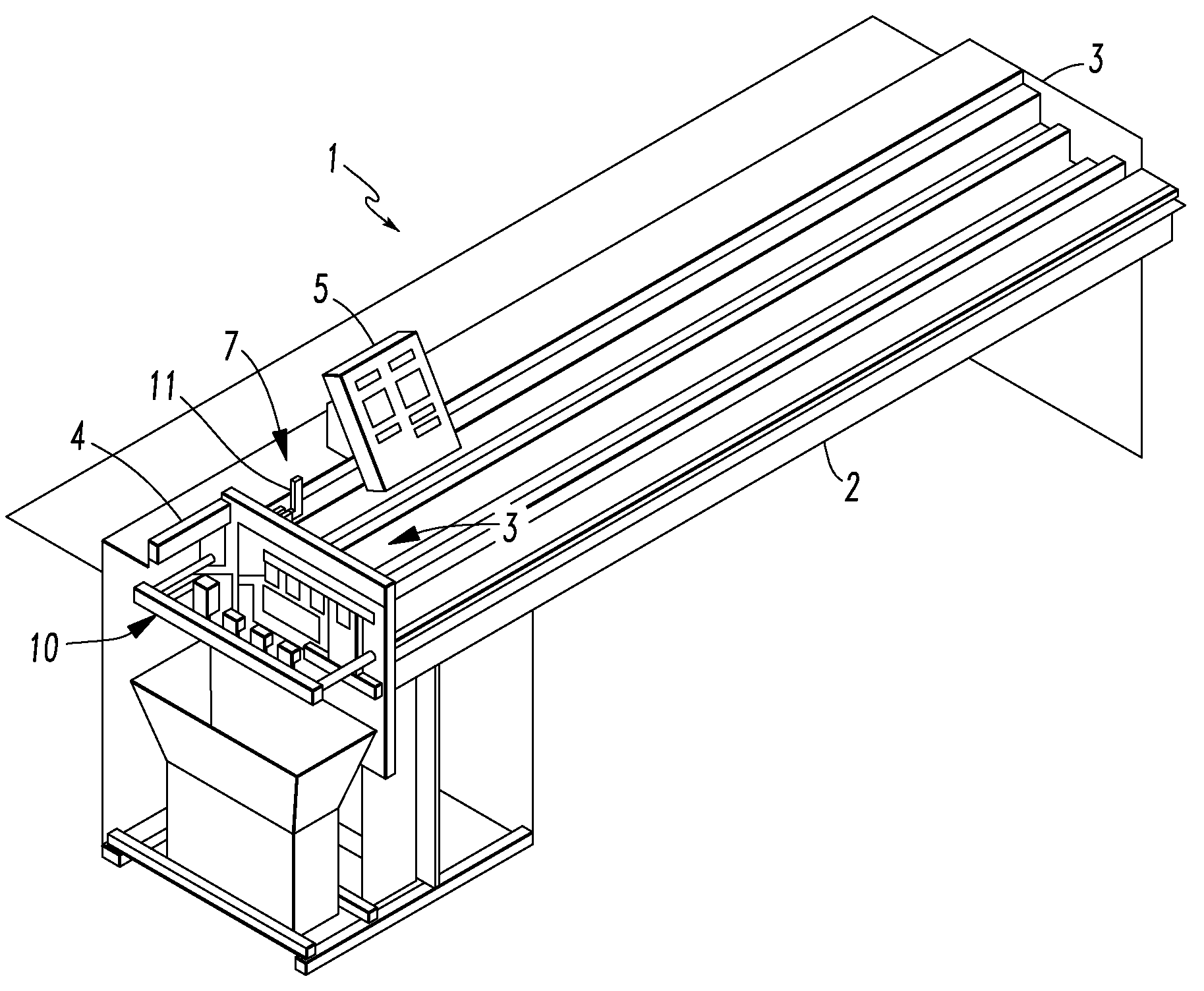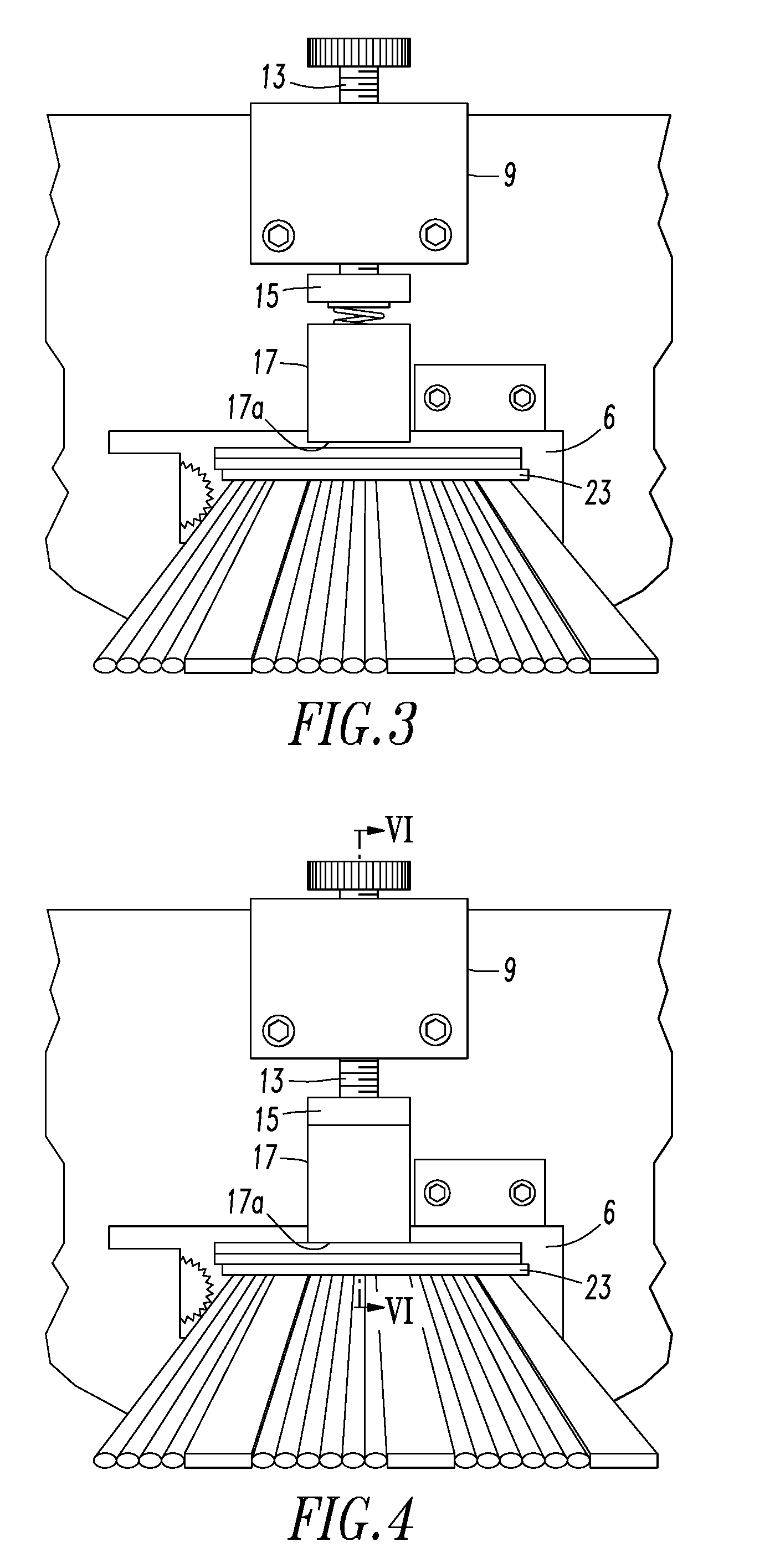Method and Machine for Cutting Blinds
- Summary
- Abstract
- Description
- Claims
- Application Information
AI Technical Summary
Benefits of technology
Problems solved by technology
Method used
Image
Examples
Embodiment Construction
[0028]Referring to FIG. 1, a first present preferred embodiment of my blind cutting machine 1 includes a support surface 2 that is sized to support a window covering to be cut down by the machine 1. The machine 1 also includes a cutting mechanism 3 connected to the support surface 2. The cutting mechanism 3 includes a housing 4 that has at least one opening 6, a cutting device 16 and a clamping device 7. The cutting device 16 may be a straight blade or a circular saw blade suitable for trimming a woven wood blind. An end stop 10 is connected to the cutting mechanism 3 and is configured to move to abut an end of a work piece extending through an opening 6 in the cutting mechanism 3. The end stop 10 may be dynamically braked to stop the movement of the end stop 10 when it is positioned to engage a work piece. Preferably, the end stop 10 is actuated by one rod or piston to better facilitate dynamic braking of the end stop 10. A carrier 8 (shown in dotted line in FIG. 1) may be provided...
PUM
| Property | Measurement | Unit |
|---|---|---|
| Pressure | aaaaa | aaaaa |
Abstract
Description
Claims
Application Information
 Login to View More
Login to View More - R&D
- Intellectual Property
- Life Sciences
- Materials
- Tech Scout
- Unparalleled Data Quality
- Higher Quality Content
- 60% Fewer Hallucinations
Browse by: Latest US Patents, China's latest patents, Technical Efficacy Thesaurus, Application Domain, Technology Topic, Popular Technical Reports.
© 2025 PatSnap. All rights reserved.Legal|Privacy policy|Modern Slavery Act Transparency Statement|Sitemap|About US| Contact US: help@patsnap.com



